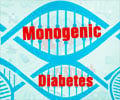
Normally, insulin triggers fat and muscle cells to take up sugar from the blood. Patients with type II diabetes make plenty of insulin, but their cells do not respond to it properly. Akt plays a role in the series of steps between insulin exposure and sugar uptake; specifically, it causes proteins that take sugar from the blood to move to the cell surface. Mice that lack the gene for Akt develop diabetes-like symptoms.
"We know that Akt is a key player in diabetes, so we are trying to work upstream from there," Shiozaki said.
Akt also controls cell growth in early embryos and can promote the growth of cancer cells, he added.
Since TORC 2 was first identified in 2005 as a regulator of Akt, researchers have been trying to identify how it is activated, Shiozaki said. The complex appears to be very similar across organisms ranging from humans to yeast.
Shiozaki and colleagues Hisashi Tatebe, Susumu Morigasaki, Shinichi Murayama and Cui Tracy Zeng studied TORC 2 in a yeast. They found that a protein called Ryh1, when bound to another molecule called guanosine triphosphate, is needed to activate TORC 2.
Advertisement
Ryh1 is very similar to a human protein, Rab6. The researchers found that human Rab6 could to some extent replace yeast Ryh1 as an activator of TORC 2 in defective yeast strains.
Advertisement
"Our discovery suggests that the early and late steps in insulin response are closely linked to each other," Shiozaki said.
Source-Eurekalert















